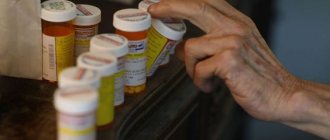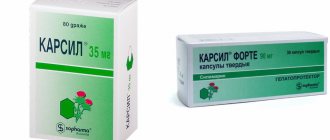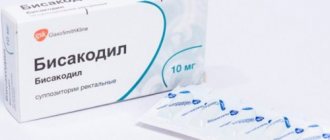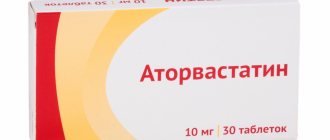What is the DPT vaccine for?
DTP vaccination is an adsorbed pertussis-diphtheria-tetanus vaccine. All three diseases that it protects against are caused by bacteria that produce toxins and attack the human body. Vaccination cannot protect against bacterial infection - it is aimed at neutralizing toxins.
Vaccine composition
The DPT vaccine contains components of three bacteria: Bordetella pertussis (causes whooping cough), Corynebacterium diphtheriae and Clostridium tetani (causes diphtheria and tetanus, respectively).
The pertussis component of the vaccine is represented by whole microbial cells, previously “killed” by formaldehyde. To protect against diphtheria and tetanus, the vaccine includes separate purified diphtheria and tetanus toxoids, which are obtained from the bacteria that cause these diseases. Thus, DTP is an inactivated vaccine. It may not provide as much protection as live, attenuated vaccines such as the measles vaccine, so it must be given multiple times.
Aluminum salts are added to DPT as an immune response enhancer (adjuvant). Antigens adsorbed on them provoke the development of humoral immunity.
Many people are afraid of the DPT vaccine because of its high reactogenicity. This is due to its pertussis component – whole cells of Bordetella pertussis. If for some reason your child cannot receive DPT, vaccination against diphtheria and tetanus can still be done. For this purpose, there are separate preparations of toxoids: AS - tetanus toxoid, AD - diphtheria toxoid and ADS - diphtheria and tetanus toxoids without pertussis component. Of course, ADS vaccination is more convenient, because then you will have to give fewer injections when receiving subsequent doses.
Tips for dealing with negative reactions
It is impossible to completely protect your baby from complications that arise after vaccination against tetanus, diphtheria and whooping cough. It is quite possible to minimize risks. To do this, you must follow the following recommendations:
- You cannot bathe your child or get the injection site wet on the first day after visiting the treatment room.
- It is not advisable to visit crowded places in the first 2-3 days after vaccination.
- It is necessary to ensure a calm emotional environment in the home.
- If the baby has a negative reaction to the first vaccination, an alternative drug replacement is selected.
- During the vaccination period, the child’s diet should not be changed.
What analogues of DPT are there?
DPT is often replaced with alternative means. The following vaccine analogues are distinguished:
- Infanrix is distinguished by the absence of microorganisms that cause whooping cough in its composition. Side effects with these drugs occur less frequently. The birthplace of production is France.
- Pentaxim includes five active components. Unlike standard DPT, it provides protection against Haemophilus influenzae. The drug is produced in Belgium.
- Infanrix IPV additionally prevents a child from contracting polio.
Vaccination schedule
DTP vaccination is included in the National Preventive Vaccination Calendar. The vaccination course consists of three vaccinations:
- at 3 months,
- at 4.5 months,
- at 6 months.
Then at 18 months, revaccination is carried out. If the schedule was violated, the doctor waits 12–13 months after the last DPT vaccination. If the DPT vaccine was not administered at all, the age of the child matters:
- if the child is under 3 years 11 months 29 days, DPT is administered;
- if older, but not yet 6 years old, the pertussis component is excluded and ADS toxoid is administered;
- for children over 6 years of age, ADS-M toxoid is used, in which the content of diphtheria toxoid is reduced.
Important! According to the vaccination schedule, children at 6-7 and 14 years of age must undergo a second and third revaccination against diphtheria and tetanus using toxoid preparations with a reduced content of the diphtheria component (ADS-M). In the future, revaccination against these diseases is carried out for all adults once every 10 years.
Revaccination of older children and adults against whooping cough is not carried out in Russia, although vaccination with acellular whooping cough vaccines is widely practiced abroad in children and adolescents, as well as pregnant women, starting from the 26th week of pregnancy, which helps protect infants under 3 months from the disease (for vaccination of older children age and adults use special preparations with a reduced content of diphtheria toxoid).
Preparing a child for vaccination
Before vaccination, children are always examined by a pediatrician.
Photo: AllaSerebrina / Depositphotos The vaccine is administered intramuscularly; the procedure does not require any special preparation. However, DPT has contraindications. Some are worth paying attention to, others only create false impressions about the vaccine.
True contraindications include:
- allergy to vaccine components, which manifests itself in a strong general reaction or complications after the previous administration. These include: the first two days, temperature above 40 ℃, swelling more than 8 cm in diameter, developed Guillain-Barré syndrome (autoimmune disease);
- severe immunodeficiency;
- convulsions/fits and other diseases of the nervous system in a progressive process.
What conditions cannot be exempt from vaccination?
False contraindications to DTP vaccination:
- acute diseases (4 weeks after recovery), mild respiratory diseases (2 weeks after);
- chronic diseases (the main thing is to wait for remission);
- diathesis (beyond exacerbation);
- weight loss, prematurity;
- allergic diseases: local rashes, spasm of the respiratory tract with cough (bronchospasm);
- taking antibiotics;
- convulsions/allergic reactions to DTP in relatives.
Diphtheria
Diphtheria is a bacterial infection characterized by specific changes in the oropharynx and a pronounced toxic syndrome. Diphtheria is transmitted by airborne droplets (from a patient or a carrier during breathing), less often by contact (from contaminated objects). Infection occurs approximately 2-10 days from the moment of contact.
Diphtheria is characterized by pronounced changes in the oropharynx. The throat turns red, then becomes covered with a dense fibrin film, which is difficult to separate from the mucous membranes, and sometimes makes breathing difficult. Diphtheria of the larynx is accompanied by hoarseness and loss of voice, difficulty breathing, and in some cases bleeding.
The diphtheria bacillus is an infectious agent that can produce a toxin. Under its influence, a toxic syndrome develops in the body - swelling of the upper respiratory tract and subcutaneous fat. At the same time, patients feel clearly unwell: high fever, difficulty breathing, headaches. In addition, the disease is often complicated by myocarditis and pathology of the nervous system (encephalitis). To treat diphtheria, antibiotics are used, as well as antitoxic serum or immunoglobulin.
Diphtheria is now rare. It's not very contagious. But this disease is serious, and in the pre-vaccination era it was in first place as the cause of child mortality.
DTP analogues
Due to the frequency and severity of side effects associated with DTP, new, acellular drugs (ACDs) became widespread in the mid-1990s. All of them, like DPT, are combined with diphtheria and tetanus toxoids, but instead of whole pertussis bacteria they contain only individual pertussis antigens. Such vaccines are better tolerated and have completely replaced the DPT vaccine in many countries with a low risk of whooping cough infection. Many of the new cell-free drugs protect against 5 or even 6 infections at once:
- Infanrix hexa (6 infections, including hepatitis B, polio and Haemophilus influenzae),
- Pentaxim (5 infections, including polio and hemophilus influenzae),
- Tetraxim (4 infections, including polio).
Among the three-component BCVs: Infanrix for children and Adasel for adults (this vaccine has a reduced amount of diphtheria toxoid).
However, experts believe that the whole-cell vaccine protects better - there are more antigens, and the immune response is closer to natural infection. If we compare acellular vaccines, those with more pertussis antigens protect better.
When choosing between whole-cell drugs, in addition to DPT, you can pay attention to four-component ones, which also protect against hepatitis B.
Treatment of adverse reactions
Parents should know not only what complications DPT causes, but also how to treat them. Help for your baby after vaccination in case of side effects is as follows:
- Symptoms of an allergic reaction can be treated with antihistamines.
- The temperature should not be reduced to 38.5 °C. If it increases above this mark, it is necessary to give the child an antipyretic drug.
- If the injection area is swollen and painful, a numbing ointment is applied.
- If a lump or lump forms, accompanied by severe pain, it is necessary to show the child to a pediatrician as soon as possible.
Which vaccine is better to choose?
Both domestic and foreign vaccine preparations against whooping cough are presented on the Russian market.
Photo: TTK TV channel In Russia, people are vaccinated with whole-cell DPT produced by the Federal State Unitary Enterprise NPO Microgen of the Russian Ministry of Health. Foreign acellular vaccines are also available:
- Belgian "Infanrix"
- French "Tetraxim" from SANOFI PASTEUR,
- French "Pentaxim" from SANOFI PASTEUR.
The Russian inactivated combined vaccine “Bubo-Kok” produced by CJSC NPK “Combiotech” also protects against hepatitis B. The first Russian 5-valent vaccine “aDTaP-HepB+Hib” or pentovaccine produced by FSUE “NPO Microgen” is already available. It protects against five common childhood infections: diphtheria, whooping cough, tetanus, hepatitis B and Haemophilus influenzae.
Pertussis vaccine for adults
Until recently, there were no pertussis vaccines for adults in Russia.
However, in 2021, the drug “Adasel” produced by SANOFI PASTEUR appeared on the domestic market (Fig. 1). This is an acellular vaccine with a reduced content of diphtheria component. The US Centers for Disease Control and Prevention (CDC) recommends giving Adasel to adults as a booster dose to re-prime the body's immune response. The drug can also be administered to children, but again for revaccination, and not as a first dose. Pregnancy is not a contraindication for vaccination. The CDC offers pregnant women the same acellular Adasel. It is introduced at the beginning of the third trimester. In Russia, such vaccination is not practiced, although studies indicate there is no evidence of a risk to pregnancy. In America, this drug is administered before each pregnancy, even if there is a year or two between them. Children in the first months of life are susceptible to whooping cough; if the mother has not been vaccinated, they are defenseless against infection.
Figure 1. Adasel vaccine. Source: NSW Health
What to do after vaccination
It is important to monitor the condition of the body after vaccination. Their parents do this for their children. Mild side effects are more likely a good sign that the body has begun to work on its immune response. It is necessary to spend at least half an hour near the vaccination room in case of unexpected severe reactions.
The main thing is not to panic when normal passing reactions appear. You can ask your doctor in advance about antipyretic and antihistamine medications for children. On the 3rd day after vaccination, the appearance of any reactions is uncharacteristic.
General symptoms
Post-vaccination complications after DTP vaccination can manifest themselves in different ways. This depends on the initial state of the body, compliance with injection standards, and the immune response. The most common general symptoms include:
- increased body temperature;
- indigestion;
- skin rashes;
- allergies;
- cough, snot;
- convulsions.
Increased body temperature
The main thing that parents need to know is how long the temperature lasts after vaccination. It can be used to determine the degree of sensitivity of the body to the introduced drug. If the temperature stays around 37.5 °C, we are talking about a weak reaction of the body. The average degree of intensity of complications is indicated by a temperature in the range from 37.5 to 38.5 °C. Anything higher is considered a severe deviation requiring medical intervention.
Intestinal disorders
After vaccination with DTP, difficulties may arise with the digestion process. Dyspeptic disorders often appear, accompanied by loss of appetite and nausea. A short-term but fairly common side effect is diarrhea. It is typical not only for tetanus vaccination, but also for polio vaccination. In this case, vaccination is carried out with medicine in liquid form. Typically, digestion returns to normal within 2-3 days after the vaccine is administered.
Rash all over the body
Possible adverse reactions from vaccination include rashes. They can be localized in a specific area or scattered throughout the body. Most often, the rash appears in the form of small dots. It develops as a result of an allergic reaction or is a consequence of a decrease in the body's defenses.
In the second case, the rash indicates the appearance of chickenpox. One of the reasons for its development is suppressed immunity. The rash may itch and crust over. The child during this period is a carrier of the disease. Therefore, you need to limit contact with others.
Allergic rash
After receiving a tetanus shot, there is an increased risk of developing an allergic reaction. Most often it manifests itself in the form of a characteristic rash. Red dots on the body may be accompanied by swelling of the skin surface and itching sensations. Allergic manifestations make themselves felt in the first hours after vaccination. If your baby experiences asthma attacks, immediate help should be provided.
Cough and snot
Against the background of vaccination, symptoms of whooping cough appear in children. This is due to the insignificant introduction of bacterial cells into the body. Common side effects include mucous discharge from the nose and intense cough. With whooping cough, the respiratory system is primarily affected. A child's body may not be able to withstand the load on the lungs. After the vaccine is administered, the cough is not as intense. As a rule, it completely disappears after 2-3 days.
Convulsions
Seizures are considered the initial stage of the development of post-vaccination encephalitis. It is characterized by inflammation in the brain area. According to medical statistics, seizures develop very rarely. In 95% of cases they occur on the first day. In some cases, their appearance is caused by an exacerbation of a hidden neurological disease. Febrile seizures are the main manifestation of a febrile state. They are often accompanied by an increase in body temperature.
What not to do after DTP vaccination
It is better not to engage in physical activity, because an enemy has entered the body, albeit inactivated. The body’s task is to develop cells that will resist this enemy. Therefore, in the first few days you should ensure yourself peace. However, if the child feels well, then walking is not contraindicated.
It is also not recommended to change the diet of a child or a nursing mother. This can lead to additional stress on the intestines, and therefore on the entire body.
Complications after vaccine administration
DTP vaccination can cause prolonged crying in children.
Photo by Laura Garcia: Pexels Complications after vaccination that require seeking medical attention include:
- allergic rash (not local),
- more than 3 hours of uncontrollable screaming and crying,
- swelling of the face and throat,
- labored breathing,
- cardiopalmus,
- dizziness, nausea and weakness.
In the 1970s, the use of whole-cell DTP vaccine was associated with encephalopathy in children. However, numerous studies have proven the absence of this connection.
Tetanus
Tetanus is a severe bacterial infection with a contact transmission mechanism, which is characterized by damage to the nervous system with the development of convulsions and tonic muscle tension. The infection is transmitted by contact. The microbe is widespread in nature, especially in agricultural areas. It is found in soil, water, and house dust. Often it is an inhabitant of the intestines of animals, sometimes humans. Tetanus bacillus can form spores that are resistant to high and low temperatures and antiseptic solutions.
The tetanus bacillus acquires its pathogenic properties in the absence of oxygen (anaerobic environment). Getting into the wound from contaminated surfaces, the microbe begins to multiply and release a toxin. The toxin enters the nervous system through the blood. The clinical picture is developing. From infection to the first symptoms it takes approximately 1 to 3 weeks. Initially, the muscles of the face and head are affected - a sharp muscle spasm occurs. Then the changes spread to the trunk and limbs, and convulsions appear. Muscle contractions can be so intense that they injure joints and ligaments. Damage to the muscles of the heart and respiratory tract is common.
In modern conditions, the patient dies from tetanus in approximately 20% of cases. The infection is especially dangerous in children of the first year of life. Mortality reaches 90-95%. Timely treatment can reduce mortality and reduce the manifestations of the disease. However, even with its use, recovery occurs only after 2-4 months; some consequences remain irreversible for the nervous system.
Tetanus is a very dangerous infection. It is still not uncommon to encounter tetanus bacillus spores in nature.








